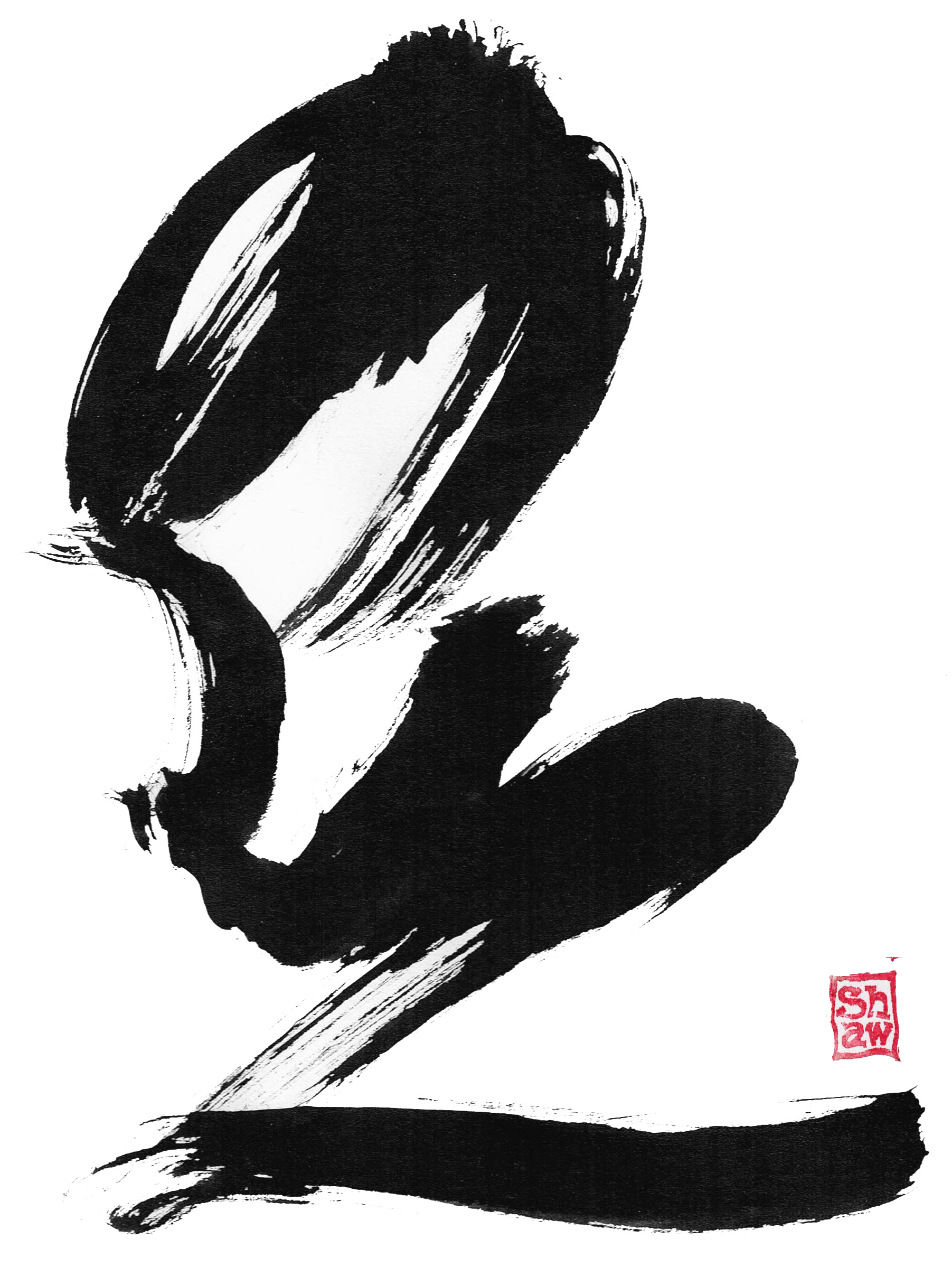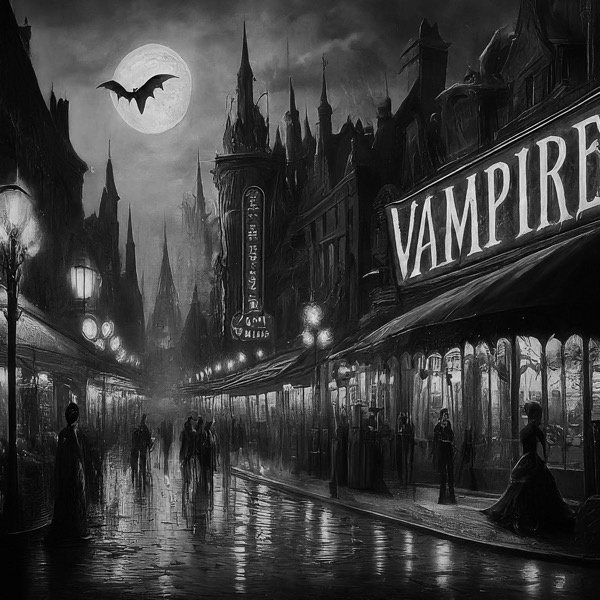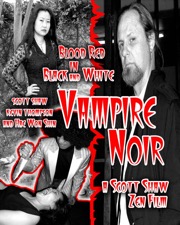Genre-Bending Shadows: A Look at Scott Shaw's Vampire Noir



Vampire Noir
Genre-Bending Shadows: A Look at Scott Shaw's Vampire Noir
Independent filmmaker Scott Shaw carves a unique path through the cinematic landscape, and his 2009 film Vampire Noir exemplifies his penchant for genre-bending narratives. This essay delves into how Shaw masterfully blends neo-noir aesthetics, vampire mythology, and documentary elements to create a visually striking and thematically rich experience.
From the outset, Vampire Noir establishes its neo-noir roots. Grainy black and white visuals bathe the rain-slick streets and dimly lit interiors in a timeless atmosphere reminiscent of classic noir films. Jack, the film's protagonist, embodies the quintessential hard-boiled detective, jaded and driven by his own demons. The narrative unfolds like a traditional mystery, with Jack investigating unsettling occurrences and uncovering hidden truths within the Los Angeles underworld.
However, Shaw shatters noir conventions by introducing the supernatural element of vampires. These creatures aren't relegated to the shadows as monstrous threats; they exist within the social fabric, their motivations and desires as complex as any human character. This subversion of traditional vampire tropes adds a layer of intrigue and challenges viewers' preconceived notions.
Further defying categorization, Vampire Noir incorporates elements of documentary filmmaking. The protagonist's narrate the story through on-screen discussions, directly addressing the audience and blurring the lines between fiction and reality. Handheld camerawork and jump cuts contribute to a raw, almost voyeuristic feel, immersing viewers in the gritty underbelly of Jack's world.
Shaw's genre-bending doesn't stop there. Hints of thriller weave through the narrative, keeping audiences on the edge of their seats with moments of suspense and danger. Brief bursts of action punctuate the film, adding dynamism without overshadowing the noir and documentary influences.
The impact of this genre-bending tapestry is multifaceted. First, it creates a unique and unsettling atmosphere. Familiar noir elements are juxtaposed with the unfamiliar presence of vampires, resulting in a world that feels both recognizable and strangely alien. This dissonance draws viewers in, constantly anticipating the next unexpected twist.
Second, genre-bending allows Shaw to subvert expectations and challenge viewers' comfort zones. By refusing to adhere to established genre conventions, he forces audiences to engage with the narrative on a deeper level, questioning their assumptions and preconceived notions.
Finally, the blending of genres serves as a vehicle for exploring complex themes. Morality, good versus evil, and the nature of reality are all dissected through the lens of noir, vampires, and documentary-style filmmaking. This multifaceted approach enriches the film's thematic depth, prompting viewers to ponder beyond the surface level of the narrative.
In conclusion, Scott Shaw's Vampire Noir stands as a testament to the power of genre-bending in filmmaking. By seamlessly weaving together neo-noir, vampire mythology, and documentary elements, Shaw crafts a visually stunning and intellectually stimulating experience. The film's genre-bending nature not only entertains but also challenges viewers' expectations and invites them to explore deeper thematic layers. In doing so, Vampire Noir solidifies its place as a unique and thought-provoking addition to the cinematic landscape.
Fast Facts:
Scott Shaw and Neo-Noir in Vampire Noir:
Atmospheric Setting: The film heavily borrows from classic noir elements like dark lighting, gritty streets, and seedy underworlds. The black and white visuals further enhance this atmosphere.
Hard-boiled Detective: The protagonist, played by Shaw, embodies the classic noir detective archetype – cynical, morally ambiguous, and driven by his own motivations.
Mystery and Intrigue: The plot unfolds like a traditional noir mystery, with protagonist investigating a series of strange occurrences and uncovering hidden secrets.
Supernatural Elements: The introduction of vampires injects a supernatural layer into the noir setting. Shaw encounters various vampire-driven characters, each with their own motivations and agendas.
Subverting Vampire Tropes: While vampires retain some traditional traits like immortality and bloodlust, they are not portrayed as typical monsters. The film explores themes of morality and humanity within the vampire context.
Blending Folklore and Mythology: The film incorporates elements of vampire folklore and mythology, but reinterprets them in a neo-noir setting.
Interviews and Voiceover: Shaw has his characters narrate the story through discussions, creating a documentary-like feel. He directly addresses the viewer, blurring the lines between fiction and reality.
Grainy Footage and Editing: The film employs a rough, handheld camera style and jump cuts, reminiscent of documentary filmmaking. This adds a sense of rawness and realism to the narrative.
Thriller: The suspenseful atmosphere and hidden dangers keep the audience on edge, adding a thriller element to the mix.
Action: While not the main focus, there are bursts of action sequences, which enhance the film's dynamism.
Unique Atmosphere: Shaw's ability to seamlessly blend these genres creates a distinct and unsettling atmosphere in Vampire Noir. It's both familiar and strange, drawing the viewer into the unique world he has crafted.
Subverting Expectations: The genre-bending keeps the audience guessing, defying expectations associated with each individual genre. This adds to the film's intrigue and surprise factor.
Exploring Themes: The blending of genres allows Shaw to explore themes of morality, good vs. evil, and the nature of reality in a fresh and thought-provoking way.
Shaw's signature Zen Filmmaking approach also contributes to the genre-bending nature of his films. The improvisation and spontaneity create a sense of fluidity and unpredictability, further blurring the lines between genres.
"Vampire Noir" may not be for everyone, as its unconventional style and genre-bending nature can be challenging for viewers expecting a traditional noir or vampire film. However, those who appreciate Shaw's unique vision and enjoy genre experimentation will find it a rewarding experience.

Vampire Noir DVD
Vampire Noir on YouTube
Vampire Noir on Amazon Prime Video